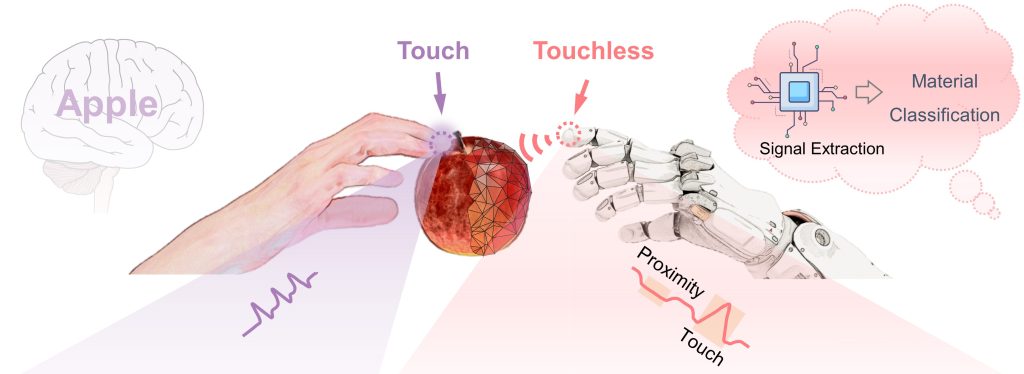As lovers might vouch, complex nuances of touch, including nearness sans physical contact and gradations of tactile pressure, convey a rich sensory experience and multi-dimensional cognitive pursuits. Intelligent interactions between biological entities or machines and organisms require artificial skins that can perceive fluctuations of intensity and pre-contact proximity. Until now, advances in the development of artificial skins have primarily explored touch as a single functional paradigm, focusing little on message-rich inputs from the environment that convey nearness or approaches.
Scientists at Nanyang Technological University’s School of Mechanical and Aerospace Engineering in Singapore have developed a flexible iontronic dual-responsive artificial skin (i-DAS) that is sensitive to an external object’s applied pressure as well as its approach. In addition, exceeding the ability of natural skins, this artificial skin can gather information on the type of material and composition of an approaching object.
Details on the development of this sophisticated artificial skin were published in the journal Small (“A Dual-Responsive Artificial Skin for Tactile and Touchless Interfaces”). The study was led by Yifan Wang, PhD, an assistant professor at Nanyang Technological University. Applications of such dual-responsive artificial skins are multifarious, ranging from next-generation electronics including intelligent robotics, human–machine interfaces, virtual or augmented reality, and artificial intelligence, to advanced prosthetics.
“We created artificial skin with sensing capabilities superior to human skin. Unlike human skin that senses most information from touching actions, this artificial skin also obtains rich cognitive information encoded in touchless or approaching operations,” said Wang. “The work could lead to next-generation robotic perception technologies superior to existing tactile sensors.”

In the current study, researchers leveraged the high-capacitive nature of the electrical double layers (EDL) that form within a highly porous iontronic sponge to engineer an enhanced artificial skin.
Iontronics is an emerging technology that involves the intricate control of ions as signal carriers that act as bridges in solid-state electronics and biological systems. Transmission of information through neurons that dynamically polarize or depolarize as ions are shuttled across membranes, is an example of natural iontronics. The principle of iontronics is that structural and functional components of aqueous circuits operate and interact through ions that vary in charge, mobility, and affinity. By mimicking biology, iontronic devices that use multi-ionic carriers, offer biocompatible and biodegradable logic circuits for sensing, ecofriendly monitoring, and brain-machine interfacing.
In this study, the researchers demonstrate the functionality of their dual-mode artificial skin using human–machine interfaces such as the manipulation of virtual game characters, navigation and zooming in of electronic maps, and scrolling through electronic documents.
Distinct signals could be detected by the artificial skin upon different approaching targets, making it feasible for touchless object identification. The investigators demonstrated the ability of the iDAS to classify materials based on composition, without touch. The iDAS successfully classified metals, polymers, and human skins. This proof-of-concept study is a milestone for iontronic devices.



